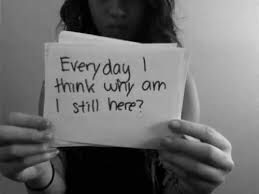The Suicide Series: When Difficult Conversations Matter

As a teacher educator, there are certainly a few topics that cause me to hold back. My chest tightens when I hear one of my teacher candidates share about a recent suicide at their school site.
As a classroom teacher I never experienced having to navigate in a school setting where a student I use to know has taken their life and I might have to grapple with questions like, “What could I have done?” “Was this preventable?” and “Were there any signs?”
In Silicon Valley where many of my teacher candidates are working teen suicide has made national headlines. The pressure to perform and the expectation to succeed is a likely factor that contributes to stress and anxiety in a teen’s life. Luthar’s (2006) research found affluent kids are at risk especially when achievement-related goals such as “attend a good college” and “make a lot of money” are higher ranked than personal values such as “being kind to others” and “happy with yourself and life”.
As a teenage I will never forget the day when I found out a friend decided to take his life. It happened unexpectedly and without warning. So the topic of suicide can possibly trigger some old memories I never had the chance to deal with. I imagine that many of the teachers I work with also know someone who took their life; teenage suicide is the second leading cause of death among teens.
Personally, the thought of suicide never occurred to me, until I lost someone I knew. Then came feelings of deep sadness that I could not explain or even process. I also began to wonder what it would be like, to bring my life to an end, would that make all my troubles go away? I experienced bullying, shaming, and pressure to perform and get into a “good” college as a teen. My parents were also going through a divorce during high school and I felt suffocated going to a catholic school where so many pressures I faced as a teen were ignored.
A recent Netflix series 13 Reasons Why, chronicles the life of a teenage girl whose decision to take her life at the onset of the movie, is revealed through a series of audio tapes she sends to students who impacted her decision. As this film and book brings much needed attention to the topic of suicide, the power and romanticism of the act can be potentially dangerous to teenagers at risk and lacking sense of agency in their life. As noted in Luthar’s research teens who are already depressed and feeling little self-worth might see suicide as powerful choice. The potential danger of a romanticized version of suicide is echoed by teen writer Jaclyn Grimm in a USA Today Op-ed piece.
Teachers should consider how media such as this show may trigger students who are already thinking about suicide. Having conversations with your students and colleagues at your school site, including guidance counselors and administrators can begin formulating ways you can build a safe and inclusive school where students thrive and feel safe, protected and cared for.
A few tips for teachers who may be working with students at risk:
- Don’t assume that other people know and will handle it. Assume that you are the only one and be pro-active.
- Don’t ignore indirect references to suicide, such as “I wish my life was over” or “You”ll be sad when I am gone”.
- Students who share ideas of feeling hopeless, withdrawn and express self-hatred may be at risk of suicide.
- Immediately contact your school psychologist, guidance counselor and social worker to determine a plan for action treat this as an emergency
- When difficult conversations occur don’t judge, or diminish students’ feelings validate their feelings and determine if they are at risk of suicide.
Here are a few addition resources for information on suicide prevention and support:
Resources: Santa Clara County American Psychological Association: Suicide Prevention




